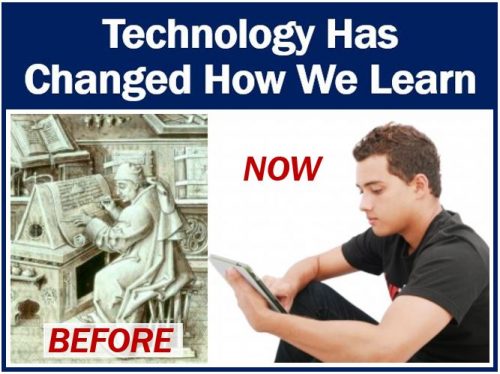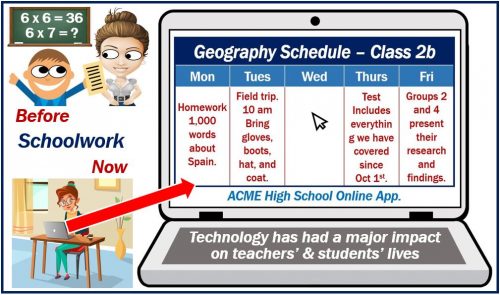Since the advent of the Internet and other technology, education and learning have changed significantly. The Internet has impacted every aspect of our lives, including education.
University classrooms do not look that different today compared to thirty or forty years ago. However, you might find that students today are looking at their smartphones, tablets, and laptops instead of books and notepads.
The workplace, however, for many people has changed. According to Writing Jobz, every year, a growing number of people are working at home.
Technology has changed access to education
Today, even if you live in a remote area, as long as you can get online, you have access to education. This was not the case for most of the twentieth century. If you lived more than a 2-hour commute from a school or college, you simply could not study.
Students today can go online and even get help from a college homework helper to assist in their assignments. Whether these services are good for education is a matter of opinion. A manager of a department, for example, when having to prepare a report, will get his or her team members to prepare the material. Lawyers, politicians, and accountants do the same. However, surgeons need to have hands-on experience, skills, and knowledge.
Today vs. medieval times
Contrasting education today and in medieval times, Purdue University writes:
“In medieval times, books were rare, and only an elite few had access to educational opportunities. Individuals had to travel to centers of learning to get an education.”
“Today, massive amounts of information (books, audio, images, videos) are available at one’s fingertips through the Internet, and opportunities for formal learning are available online worldwide through the Khan Academy, MOOCs, podcasts, traditional online degree programs, even overseas MBA admissions consulting, and more..”
“Access to learning opportunities today is unprecedented in scope thanks to technology.”

Technology or the library
According to SEO.com, ninety-three percent of students turn to Google or Bing when confronted with a research problem. Relatively few students today go to a bricks-and-mortar library building for research purposes.
The most common source of information for students is Wikipedia. In fact, it is the most popular source even for people who are not currently at school, college, or university.
What do teachers and professors think?
Approximately one-third of all academic leaders believe that online learning is inferior to face-to-face instruction.
SEO.com says the following regarding online learning:
“Even with online learning being as widespread as it is, however, as many as one in three academic leaders consider it to be inferior to face-to-face instruction.”
“As these online-trained students continue to enter the workforce, time will tell whether internet education can compete with traditional learning models.”

Is modern technology good or bad for education?
Today, we still have the same educational benefits that existed up to thirty years ago. We still have libraries where we can read books, sit down at desks, and study in relative silence. We still have paper books, pens, and pencils.
However, we also have access to hundreds of virtual libraries, videos, instruction manuals, and other sources online. In this context, ‘online‘ means ‘on the Internet.’
In a Daily Telegraph article titled ‘How technology has changed student life,’ Chris Smith writes:
“New technology has had a big impact on life at university, but students and institutions alike should be sure to take full advantage of what’s out there.”
“Technology is changing at such an amazing rate, who knows what is around the corner? We should be ready to take advantage of each innovation as it happens.”
Technology – a powerful tool
Technology is a powerful tool that can support education in many ways; it can also transform it. The Internet, for example, makes it easier for teachers to plan their lessons and create instructional material.
Students and teachers can coordinate more effectively and efficiently online. Students can go online and find out what their assignments are. Teachers can receive students’ homework online and correct or grade them online.
Even when students are at home ill or cannot come to class, they are less likely to fall behind thanks to the Internet.

